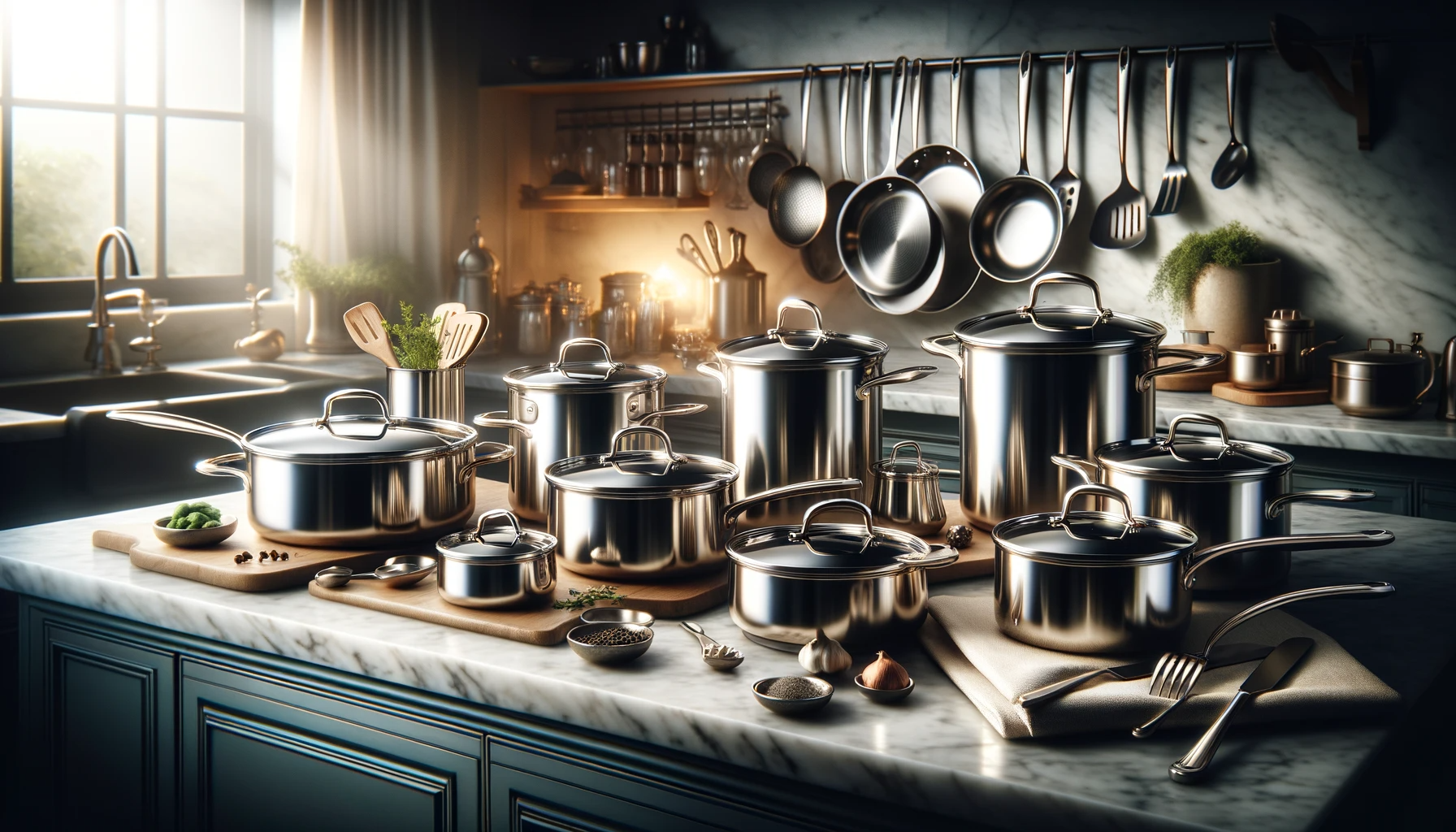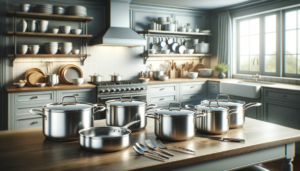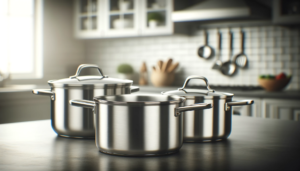With stainless steel cookware prices ranging from under $100 into the thousands, deciding the right amount to spend leaves many home cooks feeling overwhelmed.
Properly equipping your kitchen with stainless steel pots and pans requires balancing performance factors against financial realities.
Let’s dive into key guidelines around stainless steel cookware costs to chart a strategic spending plan suited to your needs.
How Much to Spend on Stainless Steel Cookware?
The ideal amount to spend on stainless steel cookware typically ranges from $100-$300 for most home cooks.
This mid-range price point gets you tri-ply pans with decent heat distribution and durability to handle regular usage.
Expect to spend $300+ for commercial-grade sets if cooking daily for crowds or pursuing professional chef ambitions.
More casual cooks can also start around $30-100 for basic stainless sets meeting basic needs.
In short, match your skill level and usage rate to the right quality and price.
Now let’s explore the ins and outs around factors impacting stainless steel cookware costs in further detail below.
Key considerations include construction quality, features, frequency of use, philosophy around cooking enjoyment versus practical needs, and recommendations based on your level as a home cook or professional chef.
Factors That Impact Cost
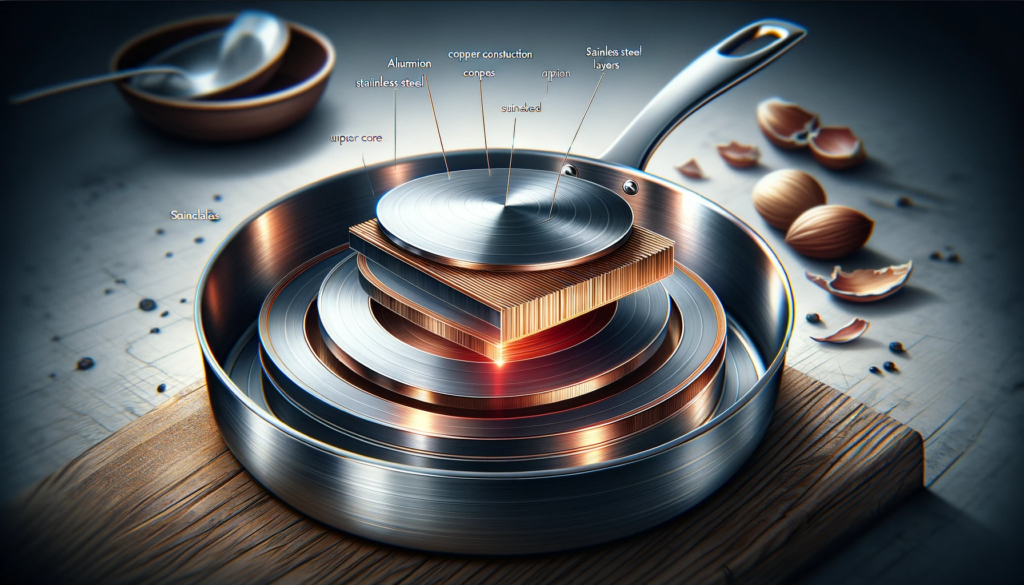
The type of stainless steel used in cookware can significantly impact the cost.
The most common varieties used are 304 and 316 stainless steel.
Three hundred and four stainless steel is more affordable but also more prone to corrosion over time.
Three hundred and sixteen grade stainless steel has a higher chromium and nickel content, making it more durable and rust-resistant, but also more expensive.
Pay attention to the grade when shopping for stainless steel cookware.
The gauge or thickness of the stainless steel affects durability and also impacts heat conduction.
Thicker steel tends to retain and distribute heat more evenly.
However, it is usually heavier and pricier.
Thinner stainless steel can keep costs down but dents more easily and develops hot spots.
Finding the right balance based on your cooking needs and budget is key.
Ply refers to the number of layers of metal bonded in the base and walls of stainless steel cookware.
Tri-ply is generally considered ideal, with an aluminum or copper core sandwiched by stainless steel on both sides.
The greater the number of ply, the higher the price tag but also the better heat conduction and durability.
Brand name stainless steel cookware from leading manufacturers carries a higher price tag compared to generic unbranded options.
You tend to pay a premium for brand reputation and the trust in consistent quality.
However, some lesser-known brands offer similar construction at more affordable costs.
Examining aspects like the preciseness of welds in handles, the smoothness of the cooking surface, the fixation methods for handles and lids, and the balancing in weight can reveal a lot about construction quality and attention to detail.
Cheaper cookware tends to skimp in these aspects.
Higher priced stainless steel cookware invests in additional features that boost functionality.
An encapsulated base with a layer of copper or aluminum improves heat distribution.
Convex bases add extra surface contact area on stove tops.
Some also have vented tempered glass lids and pouring spouts on sides.
Consider if the features warrant the price.
Typical Price Ranges
At the lower end, expect stainless steel cookware between thirty to one hundred dollars.
This budget range has limitations in durability, heat conduction, and cooking performance.
The stainless steel is likely thin, lightweight, and singular ply without a core layer for heat distribution.
Still, occasional home cooks may find these budget sets useful despite falling short in conduction and lasting power.
Mid-range stainless steel cookware costing between one hundred to three hundred dollars offers a jump in construction quality.
The thickness and ply layering improves for better durability and heat distribution.
Welded handles stay tight over years of use.
The cooking surface develops fewer hot spots.
While not professional chef grade, these solidly constructed pans and pots can keep up with enthusiastic daily home cooking.
High-end stainless steel cookware starts at three hundred dollars and goes into the thousands for commercial ranges.
Top manufacturers like All-Clad, Viking, and Mauviel excel in aspects like metal bonding, handle ergonomics, balance in weight and shape, and machined precision.
The material thickness maximizes durability while the encapsulated bases with copper and aluminum cores optimize heat circulation.
If investing in a lifetime set, this tier delivers.
Key Considerations
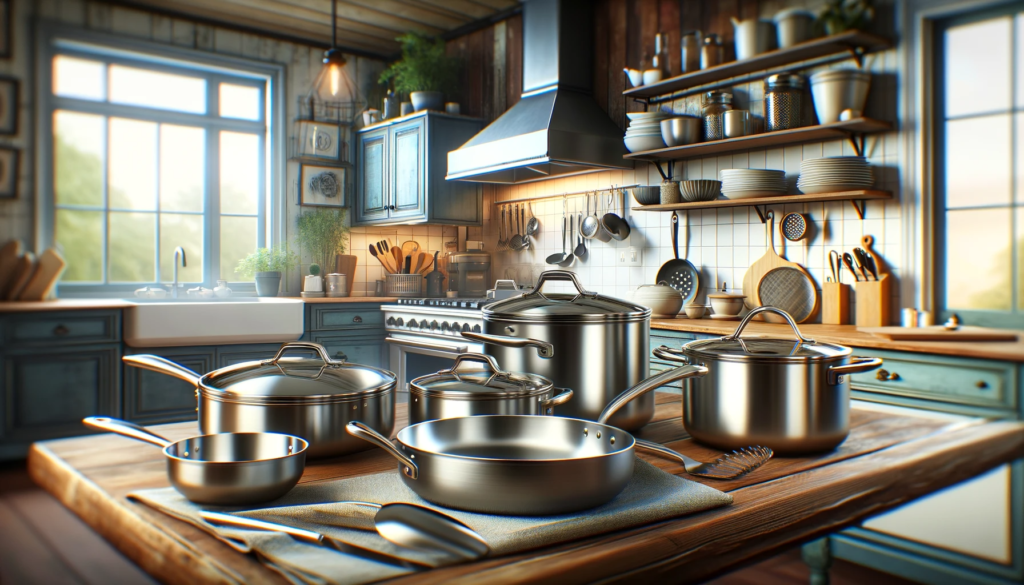
How frequently you cook guides suitable stainless steel cookware performance needs.
Occasional cooks making single skillet meals or reheating leftovers a few times a week have less demand for heat mastery compared to kitchen warriors preparing multi-course feasts daily.
Match your skill level and usage rate to the right quality grade.
Consider the number of pots and pans matched to your cooking demands.
Stocking an entire arsenal when you realistically need just a medium skillet and a stock pot wastes money.
Mix and match open stock pieces ideal for your meal repertoire.
High-use items like a 12” skillet represent smart investments, while niche cookware like steamer inserts can be left off.
Many stainless steel cookware sets bundle pieces to provide cost savings compared to open stock purchases.
But some sets include filler items you may rarely touch.
Check what is mandatory for your cooking before opting for set savings.
Sets also lock you into the manufacturer’s size choices for pots and pans when you might prefer customization.
Finding the financial sweet spot between splurging on the most expensive pro gear and settling for flimsy budget cookware comes down to introspection around cooking enjoyment versus needs.
If your passion lies outside the kitchen, keep practical.
But stainless steel cookware can be the vehicle enabling next level cooking pursuits for dedicated enthusiasts.
Determine your philosophy here when setting spend limits.
Recommended Investment Levels

Home cooks preparing a few quick weekday meals and more elaborate Sunday suppers should expect to spend between one hundred and fifty to two hundred and fifty dollars for a starting collection of stainless steel pots and pans.
Focus this core set on workhorse skillets and saucepans plus a stockpot tailored to providing good heat distribution, control, and agility for basic recipes.
Employ open stock purchases to custom build this foundational equipment array.
Avid home cooks graduating into semi-professional territory through complex recipes, advanced techniques, and volume feeding should have three hundred dollars and beyond to invest on commercial-style stainless steel cookware.
Seek fully clad construction with copper or aluminum cores, ergonomic stainless steel handles riveted for the ages, matching lids, helper handles, pouring spouts, and elements like woks and grill pans supporting diverse cooking methods.
Expect to continually add and upgrade over time.
Professional chefs demand the highest grade stainless steel money can buy.
Their cookware undergoes relentless daily use across fiery stove tops and likely overlooks decades of kitchen service.
Commercial grade sets starting at a thousand dollars must offer thick, encapsulated bases graded like armor.
Precision machined stainless steel throughout maximizes efficiency.
Staying power reigns supreme for this class of cooking warrior.
While expensive, these sets qualify as lifelong investments underwriting culinary careers.
Conclusion
With factors like metal grade, ply counts, brand reputations, construction techniques, features, usage demand, and home cooking philosophies all impacting needs, setting stainless steel cookware spend ultimately requires both left brain budget calculations and right brain lifestyle reflections in equal measure.
Determine what performance strengths best support your kitchen goals, then find where affordability thresholds reasonably match to set practical stainless steel cookware spending ranges.
Use outlined guidelines, but customize decisions to your cooking reality.
Bon appétit!
